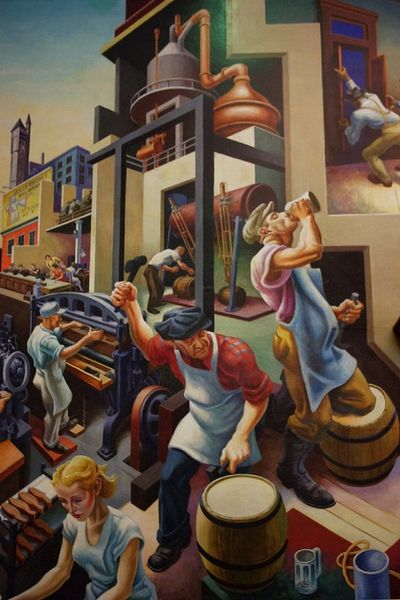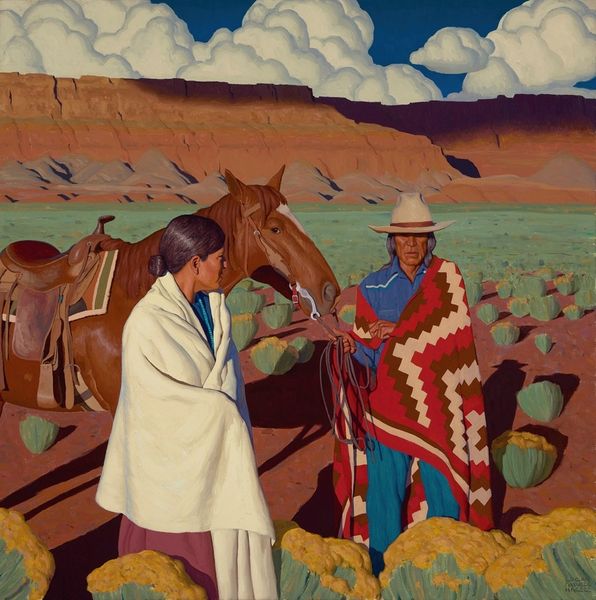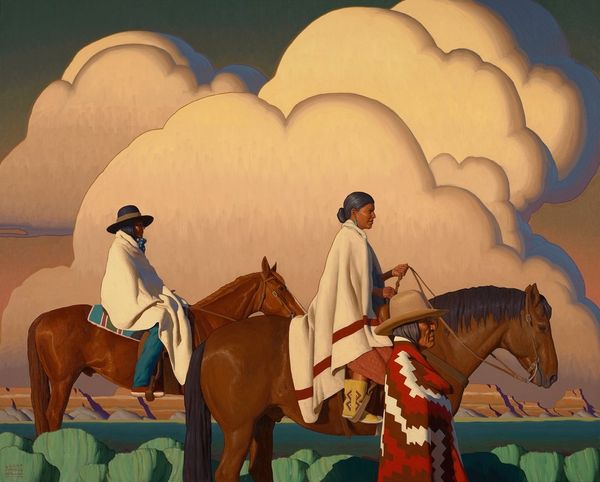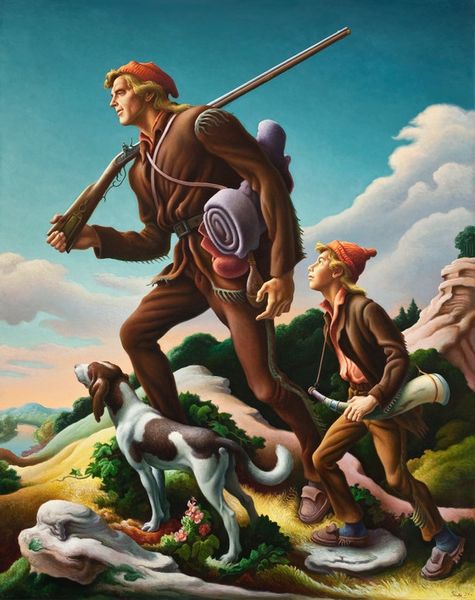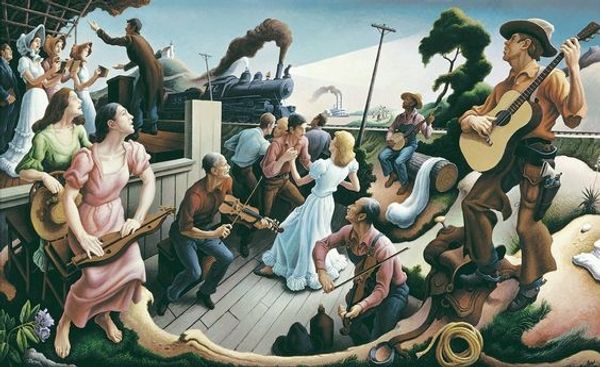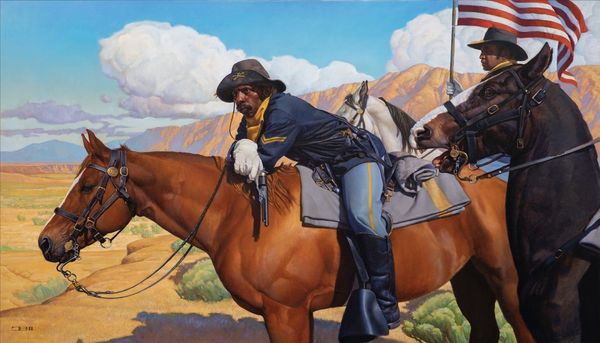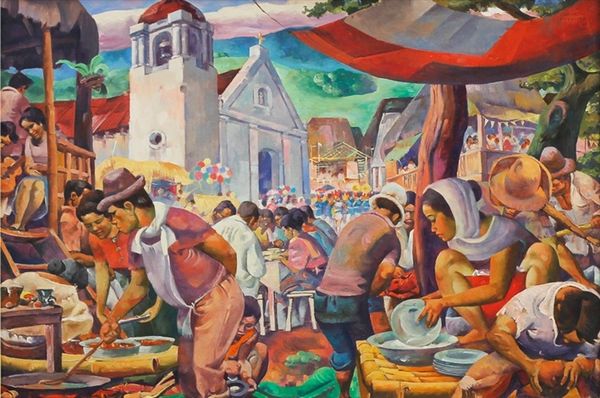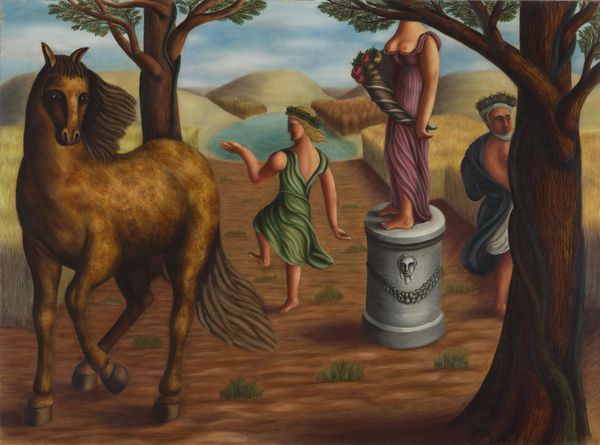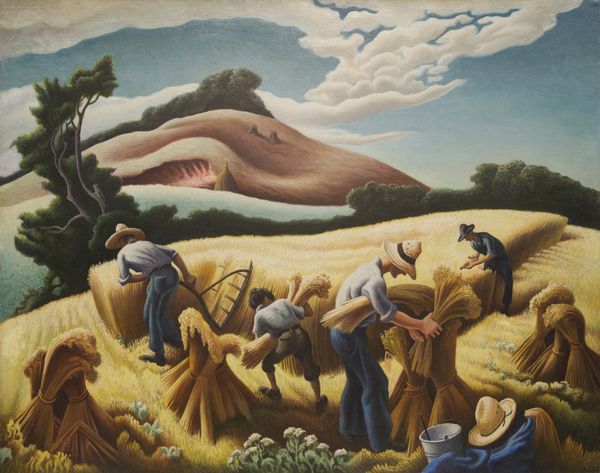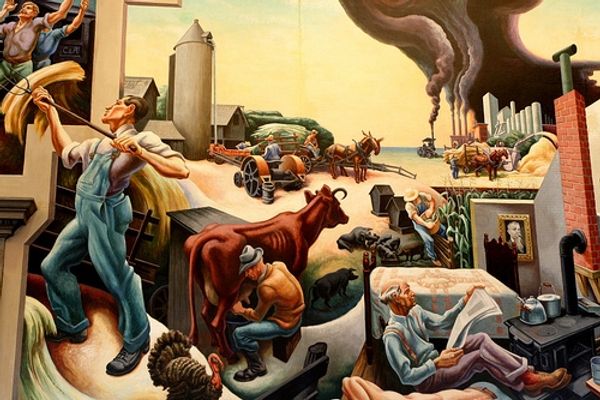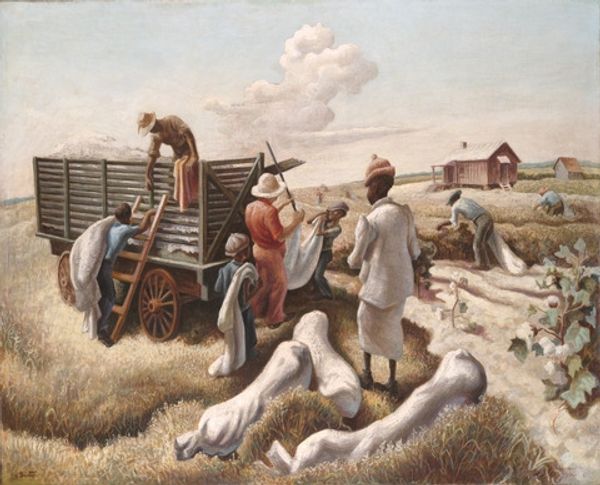
painting, oil-paint, mural
#
painting
#
oil-paint
#
landscape
#
figuration
#
social-realism
#
oil painting
#
genre-painting
#
history-painting
#
portrait art
#
mural
#
regionalism
#
realism
Copyright: Thomas Hart Benton,Fair Use
Curator: Immediately, I'm struck by the raw physical exertion depicted in this piece. The monumental scale suggests an epic, almost mythic struggle. Editor: Indeed, this is a detail from Thomas Hart Benton's mural "A Social History of the State of Missouri," painted in 1936. Benton was deeply concerned with representing everyday life, particularly the labor of ordinary Americans. You really get a sense of the Regionalist style in this piece, a desire to document and celebrate local identities and experiences in the face of increasing homogenization. Curator: The symbols of agrarian life are powerful – the farmer, the mule, even the chickens all speak to a kind of earthy resilience. Notice how the figure of the farmer, the very emblem of this landscape, is given immense physicality and strength. Editor: Absolutely, Benton wasn't just painting an idyllic scene. The materials themselves, oil paint applied in thick, sweeping strokes, speak to a laborious, hands-on process mirroring the mural's theme. These materials and techniques aren’t neutral; they signify a return to American craftsmanship, countering industrial aesthetics and mass production of the time. It underscores the value he placed on physical labor, which some viewers at the time viewed critically given how much time had been devoted to murals that celebrated progress or leisure. Curator: But consider the imagery beyond mere toil. Benton consciously presents rural life with both dignity and a hint of tension, the poses expressive of hard physical strain, also possibly echoing a certain anxiety amidst the shifting economic realities of the era. I see in it a deeper commentary on our relationship to nature and the land, reflecting cultural values that extend beyond the purely economic. Editor: I agree. What seems like simple agrarian life on the surface actually presents a detailed social record that considers land use, economic production, class dynamics. These murals serve not just to beautify spaces but to archive the collective effort it takes to create society as well as interrogate what is omitted from dominant narratives. The materiality then echoes the ethos and labor ethic within the composition. Curator: This reminds us that artwork, however grand or modest, embodies stories of humanity itself, a rich field ripe for thoughtful reflection. Editor: Absolutely, viewing art through a social lens connects us to the very making of history and invites crucial conversations around value and meaning embedded in objects of material culture.
Comments
No comments
Be the first to comment and join the conversation on the ultimate creative platform.

